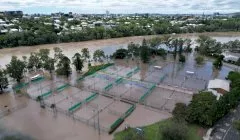Invest
'Severe' mortgage stress spike creating 'perfect storm'
The drivers of rising mortgage stress could be creating a “perfect storm” for many Australian households, with worrying parallels to pre-GFC times now surfacing.
'Severe' mortgage stress spike creating 'perfect storm'
The drivers of rising mortgage stress could be creating a “perfect storm” for many Australian households, with worrying parallels to pre-GFC times now surfacing.

Around 52,000 households are now at risk of default in the next 12 months, according to mortgage stress and default modelling from Digital Finance Analytics for the month of April.
The modelling revealed that across the nation, more than 767,000 households are now in mortgage stress (669,000 in March) with 32,000 of those in ‘severe’ stress. Overall, this equates to 23.4 per cent of households, up from 21.8 per cent on the prior month.
Digital Finance Analytics principal Martin North remarked that the results are “not all that surprising” considering that incomes are static or falling, mortgage rates are rising, and the cost of living remains “very significant” for many households.
“All those things together mean that we've got a bit of a perfect storm in terms of creating a problem for many households,” he said, adding that for many households, any further rises in mortgage rates or the cost of living would be sufficient to move them from ‘mild’ to ‘severe’ stress.

“And as you move to severely stressed you're more likely to potentially not be able to make those mortgage repayments,” he explained.
“It doesn't take much to tip people over the edge. It takes about 18 months to two years between people getting into financial difficulty and ultimately having to refinance or sell their property or do something to alleviate it dramatically, so I think we're in that transition period at the moment as rates rise… over the next 12 to 18 months, my expectation is that we would see mortgage stress and defaults both on the up.”
Mr North opined that the trend is likely to continue as the RBA is unlikely to cut cash rates, with the next cash rate move likely to be an increase.
“We also know that banks are still struggling with margin; the ANZ results out [yesterday] showed margin compression compared with a year ago, so you'd expect them to be wanting to continue to repair those margins.
“We also know that the regulators are talking about imposing more capital requirements on the banks down the track, there's a discussion paper coming out this year.
“Mortgage pricing is going to go up… income is going to remain static, because we're not seeing any recovery in income growth, and we know that cost of living is rising, and it looks like home prices growth is beginning to ease… we could be beginning to see perhaps some of the seeds similar to what happen to the US in 2007, not saying it's definite but worrying parallels.”
According to Mr North, the impact of rising mortgage stress on the country’s economic activity is potentially “quite significant” as the households in question are likely to have less disposable income to spend.
“Bear in mind the RBA data saying that household debt to income ratio is the highest it's ever been. It doesn't altogether surprise me that this is what we're seeing,” he said.
It’s difficult to know what needs to happen to turn the situation around, Mr North says, highlighting that dealing with housing affordability “doesn’t help at all”.
“This is people who have already got mortgages. I'm not sure that you can kick-start income growth, I'm not sure that you can turn off cost of living rises... there aren't many levers that can be done from a public policy perspective.
“I think individual households can do things… it's significant that less than half of the households we survey have a formal budget. Many don't know where they are in terms of their household finances, so the other recommendation would be to households to think about building a budget.”
According to Mr North, Digital Finance Analytics’ data uses a core market model, which combines information from its 52,000 household surveys, public data from the RBA, ABS and APRA, and private data from lenders and aggregators. The data is current to the end of April 2017.
The market analyst examines household cash flow based on real incomes, outgoings and mortgage repayments. Households are “stressed” when income does not cover ongoing costs, rather than identifying a set proportion of income, (such as 30 per cent) directed to a mortgage.

Spending
Moneysmart study reveals Gen Z women more concerned about finances than men
A new research conducted by ASIC’s Moneysmart has unveiled the heightened levels of stress and concern regarding finances and the cost of living among Australian Gen Z women compared to their male ...Read more

Spending
The cost of politeness: Aussies out of pocket by $1,350 due to 'awkward tax'
It's the time of year when Australians dive into their pockets for festive events and gatherings, yet a recent study by PayPal suggests that many are too polite, or perhaps too embarrassed, to ask for ...Read more

Spending
Aussies can ‘NAB Now Pay Later’ with the last major bank to embrace BNPL
NAB has become the latest bank to enter the BNPL market. Read more

Spending
Aussie households spent $368 a week on transport after petrol price surge
Fuel costs have increased by 40 per cent over the past year, a new report from the Australian Automobile Association has revealed. Read more

Spending
Voters say reducing the cost of living should be the government’s top priority
Aussies have ranked high cost of living as the top issue that needs to be addressed by the next government. Read more

Spending
Bodies back Labor’s commitment to stronger BNPL regulation
All parties should commit to stronger regulations for the BNPL sector, according to Financial Counselling Australia. Read more

Spending
Household spending surges led by retail and recreation
Spending on retail, recreation and hospitality have continued to climb as COVID-19 case numbers and restrictions have eased. Read more

Spending
Banks extend financial assistance to flood-affected customers
A range of assistance is available from major banks to those impacted by flooding in NSW and Queensland. Read more

Spending
Moneysmart study reveals Gen Z women more concerned about finances than men
A new research conducted by ASIC’s Moneysmart has unveiled the heightened levels of stress and concern regarding finances and the cost of living among Australian Gen Z women compared to their male ...Read more

Spending
The cost of politeness: Aussies out of pocket by $1,350 due to 'awkward tax'
It's the time of year when Australians dive into their pockets for festive events and gatherings, yet a recent study by PayPal suggests that many are too polite, or perhaps too embarrassed, to ask for ...Read more

Spending
Aussies can ‘NAB Now Pay Later’ with the last major bank to embrace BNPL
NAB has become the latest bank to enter the BNPL market. Read more

Spending
Aussie households spent $368 a week on transport after petrol price surge
Fuel costs have increased by 40 per cent over the past year, a new report from the Australian Automobile Association has revealed. Read more

Spending
Voters say reducing the cost of living should be the government’s top priority
Aussies have ranked high cost of living as the top issue that needs to be addressed by the next government. Read more

Spending
Bodies back Labor’s commitment to stronger BNPL regulation
All parties should commit to stronger regulations for the BNPL sector, according to Financial Counselling Australia. Read more

Spending
Household spending surges led by retail and recreation
Spending on retail, recreation and hospitality have continued to climb as COVID-19 case numbers and restrictions have eased. Read more

Spending
Banks extend financial assistance to flood-affected customers
A range of assistance is available from major banks to those impacted by flooding in NSW and Queensland. Read more









